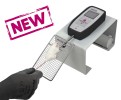Authors
JE Shin, SJ Park, SI Ahn, SY
Lab
College of Pharmacy, Kyung Hee University, Seoul, Korea
Journal
Nutrients
Abstract
Sarcopenia, a loss of skeletal muscle mass and function, is prevalent in older people and associated with functional decline and mortality. Protein supplementation is necessary to maintain skeletal muscle mass and whey protein hydrolysates have the best nutrient quality among food proteins. In the first study, C57BL/6 mice were subjected to immobilization for 1 week to induce muscle atrophy. Then, mice were administered with four different whey protein hydrolysates for 2 weeks with continuous immobilization. Among them, soluble whey protein hydrolysate (WP-S) had the greatest increase in grip strength, muscle weight, and cross-sectional area of muscle fiber than other whey protein hydrolysates. To investigate the molecular mechanism, we conducted another experiment with the same experimental design. WP-S significantly promoted the phosphoinositide 3-kinase (PI3K)/protein kinase B (Akt)/mammalian target of rapamycin (mTOR) pathway and inhibited the PI3K/Akt/forkhead box O (FoxO) pathway. In addition, it increased myosin heavy chain (MyHC) expression in both the soleus and quadriceps and changed MyHC isoform expressions. In conclusion, WP-S attenuated muscle atrophy induced by immobilization by enhancing the net protein content regulating muscle protein synthesis and degradation. Thus, it is a necessary and probable candidate for developing functional food to prevent sarcopenia.
BIOSEB Instruments Used:
Grip strength test (BIO-GS3)

 Pain - Thermal Allodynia / Hyperalgesia
Pain - Thermal Allodynia / Hyperalgesia Pain - Spontaneous Pain - Postural Deficit
Pain - Spontaneous Pain - Postural Deficit Pain - Mechanical Allodynia / Hyperalgesia
Pain - Mechanical Allodynia / Hyperalgesia Learning/Memory - Attention - Addiction
Learning/Memory - Attention - Addiction Physiology & Respiratory Research
Physiology & Respiratory Research
 Pain
Pain Metabolism
Metabolism Motor control
Motor control Neurodegeneration
Neurodegeneration Cross-disciplinary subjects
Cross-disciplinary subjects Muscular system
Muscular system General activity
General activity Mood Disorders
Mood Disorders Other disorders
Other disorders Joints
Joints Central Nervous System (CNS)
Central Nervous System (CNS) Sensory system
Sensory system Bioseb on booth #14 at OARSI 2024 in Vienna
Bioseb on booth #14 at OARSI 2024 in Vienna 